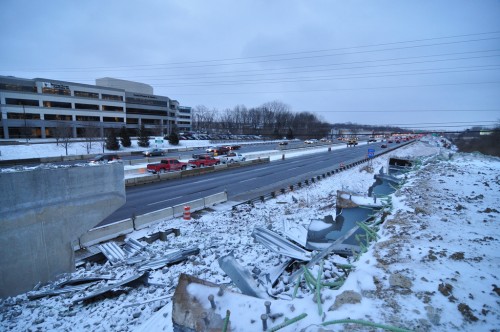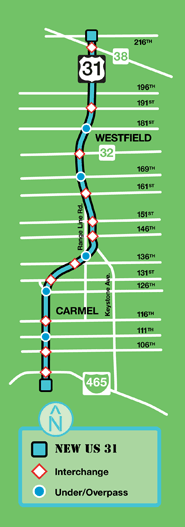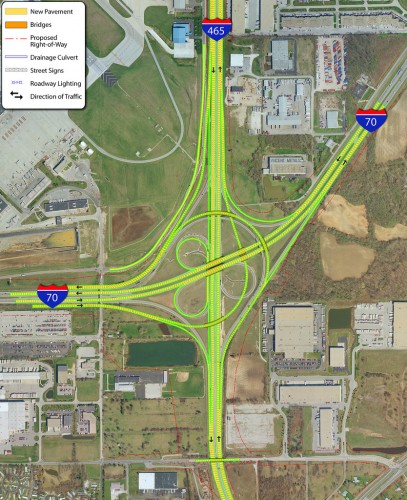In light of my recent posts about Indyconnect gutting the light rail portion of the plan for Marion County, I thought it would be a good time to put some of this financial talk in context by displaying what some recent, and ongoing, roads projects in the Indianapolis area are costing us. This is a partial repost of an old article I did for my personal blog before joining Urban Indy
————-

I want to take this opportunity to point out the manner in which highway construction in Indiana is being undertaken. While Indianapolis has recently received a lot of press regarding Indyconnect (and after reading this post, you will see why it’s a ray of bright white light) we will show you that there is a looooooooong long way to go in curbing our dependance on the autmobile.
Aaron Renn, The urbanophile, recently reposted his article covering the highway project attempting to be brought to bare on the riverfront of Louisville. A multi billion dollar project that will not only further divide it’s urban core from the river, but will expend billions of dollars from Indiana and Kentucky’s budgets to construct. In that post, he laid out a pretty convincing counter argument to the entire project that would save this money, save the Louisville riverfront, and show the country that Louisville can put a good foot forward in digging itself out of the hole that was recently created for it in Brooking’s latest data.
I just took a look at the official website for the Ohio River Bridges Project of Kentucky & Indiana and it appears that it is full steam ahead with $100 million in bonds issued for land purchase. If that is the case, what can be done to stop them? What can be done to stop any of the madness currently unfolding? Below, I am laying out what all the recent, and planned, highway projects going on in Indiana cost.

Ohio River Bridges Project of Kentucky & Indiana: $4.1 Billion ($1.15 billion from Indiana)
Accelerate 465 (Westside of Indy): $550 million
I-69 from Evansville to Indy: $1.8 Billion but recent media reports $3 billion+
465/69 NE Reconstruction: $587 million
Super 70: $175 million
US31 Major Moves: $435 Million
In fact, to put some of this in scale, one project currently under construction on Indy’s west side, is reconstructing the interchanges at 465 and I70 and also the old airport expressway, now called the Sam Jones Expressway. This interchange alone, is costing taxpayers $90 million, as reported by the IBJ.

While it is possible to make the case that these projects all help unclog freeways that are currently clogged up, they illustrate the HUGE amounts of capital going towards unrestricted highway construction. Another underlying fact is that a byproduct of highway expansion, is induced demand. While congestion may be temporarily mitigated, new expansion only welcomes more automobiles and congestion in the near future.
Looking at rural counties, they spend an ENORMOUS amount of money on roads, partly because they need them just to be able to get to work. But then again, you have the problem of induced demand: if you make it more convenient to drive in from the countryside, then more people will move there, pressuring local officials to build more roads to make it even more convenient, and so on ad nauseam.
.
Incidentally enough, the budget crunches may end up stopping this dead in its tracks. Heck, a very small number of municipalities have started to convert formerly paved roads into gravel.
Well, we do love our cars. 🙂
.
Idea for Urban Indy: contest to see who puts the fewest miles on their primary car in 2011. Take a picture of the odometer on New Year’s Day 2011 and 2012 as proof.
sounds like a good idea, but might have to be done on facebook or of the like
I love it! My wife and I share a car and drive very little but probably wouldn’t win because we still put quite a few miles on driving trips around the country.
I’m game, but I’ll be working from home for part of the year, which is kind of cheating.
I love that idea. Also included should be the distance traveled each year to determine the mileage as a percentage of overall travel.